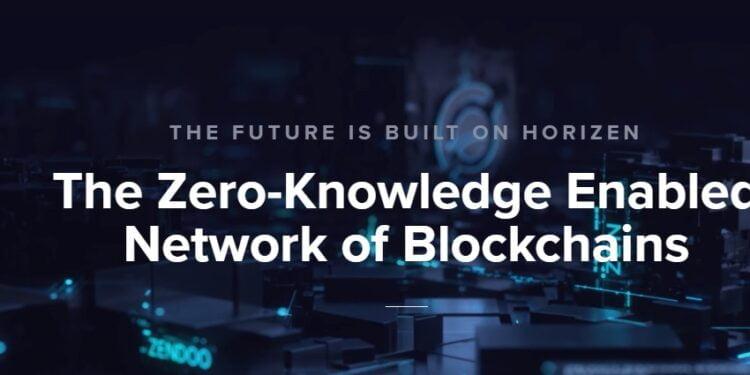Best WEB 3.0 Crypto decentralized web, also known as Web 3.0, is ushering in a new era of efficiency and innovation, and cryptocurrencies are essential to this game-changing scene. Ethereum (ETH) is a notable illustration of a Web 3.0 cryptocurrency, as it functions not only as a digital currency but also as a decentralized platform for decentralized applications (DApps) and smart contracts. The blockchain technology developed by Ethereum makes it possible to create decentralized systems that are efficient, transparent, and secure.
The goal of Ethereum 2.0 is to improve sustainability and scalability while resolving some of the drawbacks of its predecessor. In addition, additional initiatives like Cardano and Polkadot support the Web 3.0 story by providing scalability and interoperability solutions. These cryptocurrencies are leading the way in the decentralized web’s evolution, offering consumers more control over their data and interactions in a decentralized, trustless environment.
How To Choose Best WEB 3.0 Crypto?
Choosing the best Web 3.0 crypto involves careful consideration of various factors. Web 3.0 refers to the next generation of the internet, characterized by decentralized and peer-to-peer interactions. When evaluating Web 3.0 cryptocurrencies, here are some key factors to consider:
Goal of the Project and Use Case: Recognize the project’s goals and use cases. What issue does it seek to resolve in the context of Web 3.0? Seek for initiatives with precise, attainable objectives.
Architecture and Technology: Analyze the architecture and underlying technology. Does the project use a stable and expandable blockchain? Does it make use of novel consensus techniques?
Decentralization: Evaluate how decentralized things are. Reducing dependency on central authorities is the goal of Web 3.0. Seek for initiatives where power is shared among stakeholders as opposed to being under the authority of one person.
Activities for the Community and Development: A robust and dynamic community is frequently indicative of a well-run enterprise. To make sure there are updates and continued progress, keep an eye on the project’s GitHub repository and development activity.
Tokenomics: Analyze the cryptocurrency’s tokenomics. Recognize the inflation rate, distribution mechanism, and ecosystem usage of tokens. An effective tokenomics model can help ensure the project’s long-term viability.
Collaborations & Partnerships: Seek collaborations with respectable businesses, associations, or other blockchain initiatives. Partnerships have the ability to increase the Web 3.0 cryptocurrency’s legitimacy and success.
Safety: Safety comes first. Examine the blockchain’s security features and the project’s dedication to user asset protection. Verify whether reliable third-party companies have performed security audits on the project.
Adherence to Regulations: Think about how the project plans to comply with regulations. Future legal issues for a cryptocurrency are probably less likely to arise if it conforms with all applicable legislation.
Here Is List of The Best WEB 3.0 Crypto
- Filecoin
- Polkadot
- Chainlink
- Helium
- Ethereum
- Theta
- BitTorrent
- GRT
- Basic Attention Token
- Flux
- Ocean
- Kadena
- Siacoin
- Arweave (AR)
- Audius
- Livepeer
- Decentraland
- Kusama
- Solana
- ZCash
- BNB
- Uniswap
- BTC
- Stacks (STX)
- Conflux Network
- Marlin POND
- XYO Network
- Litentry LIT
- Elastos
- Horizen
30 Best WEB 3.0 Crypto In 2024
1.Filecoin (Best WEB 3.0 Crypto)
In the field of Web 3.0 cryptocurrencies, Filecoin stands out as a trailblazer because it provides a decentralized storage solution that transforms how data is accessed and saved online. Fundamentally, Filecoin uses blockchain technology to establish a storage services marketplace that links people in need of dependable and safe data storage with those who have extra space to provide. This novel technique meets the rising need for reliable, censorship-resistant, and trustless data storage while simultaneously promoting decentralization.
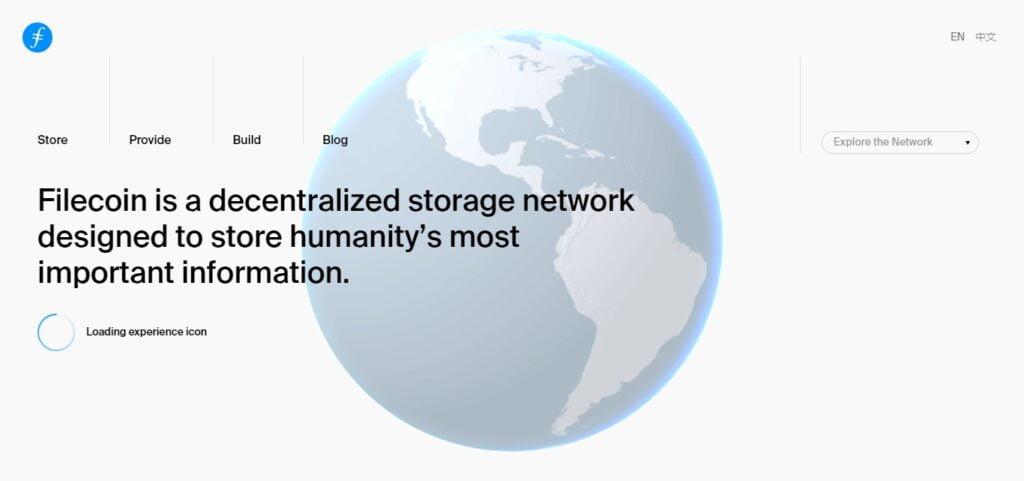
Users may easily create a dynamic and self-sustaining ecosystem by renting out their excess storage space and receiving Filecoin tokens in return. Filecoin becomes a key actor in the development of Web 3.0, bringing in a new era where people have more control over their data and where storage becomes a cooperative, decentralized project, with its emphasis on security, transparency, and rewarding resource sharing.
2.Polkadot
As a leader in Web 3.0 cryptocurrency, Polkadot is notable for taking a novel approach to blockchain technology. Polkadot, the brainchild of Ethereum co-founder Dr. Gavin Wood, presents a novel multichain platform that enables interoperability among disparate blockchains. This interoperability is revolutionary because it makes it possible for disparate networks to exchange data and communicate with one other without any problems, promoting a decentralized ecosystem that is more cohesive and linked. These parachains are held together by Polkadot’s relay chain, which allows them to function independently of one another while working together.
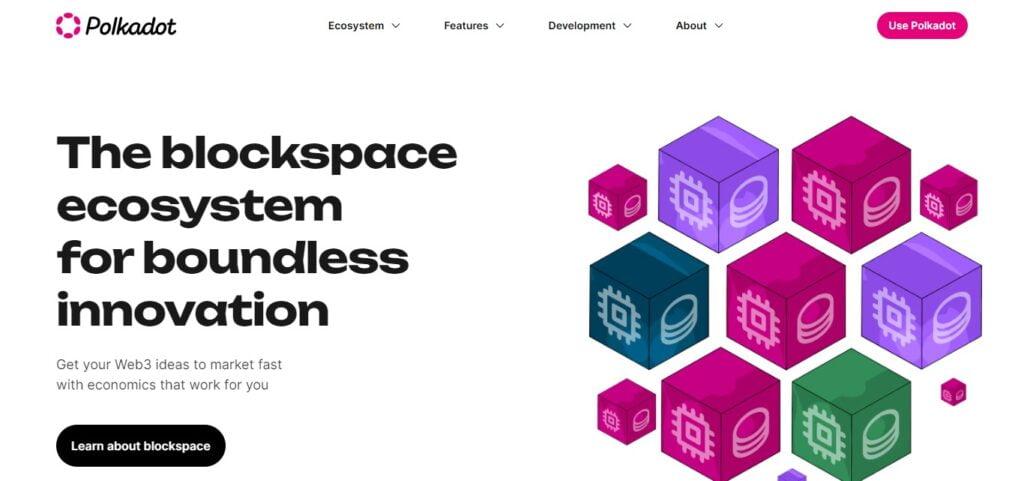
This novel architecture fosters a more specialized and efficient blockchain environment in addition to improving scalability. Polkadot’s platform’s capacity to adapt and upgrade via its on-chain governance mechanism further establishes it as a dynamic player in the rapidly changing Web 3.0 environment. Polkadot’s comprehensive and forward-thinking strategy puts it as a cornerstone in the creation of the future decentralized internet, as the crypto world begins to grasp the need of interoperability.
3.Chainlink
One of the mainstays in the quickly changing Web 3.0 cryptocurrency scene is Chainlink. Chainlink functions as a decentralized oracle network, providing safe and impenetrable data feeds that allow smart contracts to communicate with actual data. By addressing a significant drawback of previous blockchain iterations, this special feature opens the door to a more adaptable and stable decentralized ecosystem. By ensuring data quality and dependability, Chainlink’s architecture reduces the risks related to centralized oracles. Smart contracts are more secure overall because of their decentralized architecture, which makes them less vulnerable to fraud or manipulation.
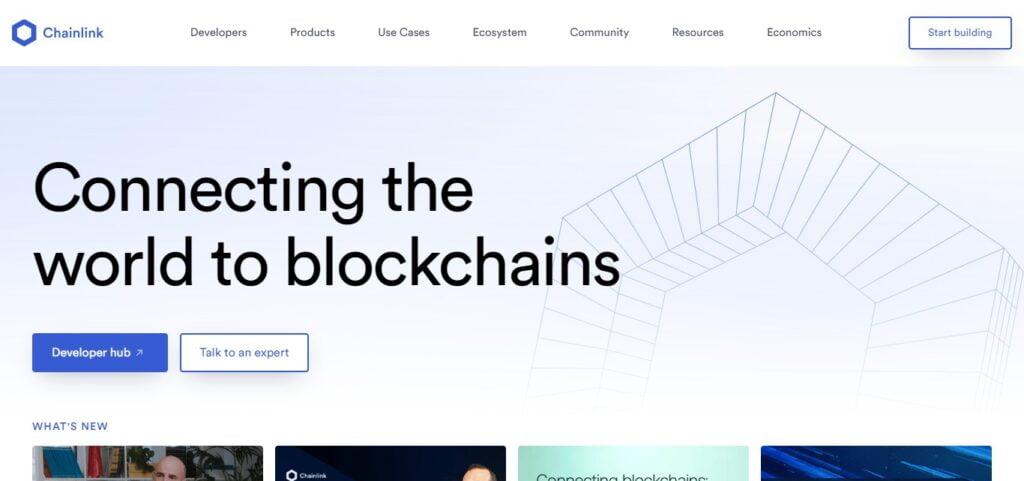
Furthermore, Chainlink’s capacity to link smart contracts to off-chain data sources and external APIs adds dynamism and opens up new opportunities for decentralized applications (dApps) in a variety of sectors. As a key component of the decentralized internet of the future, also known as Web 3.0, Chainlink stands out for its creative method of bridging the gap between blockchain technology and the real world. Chainlink continues to lead the way in meeting the growing demand for reliable and effective decentralized oracle solutions, significantly influencing the direction of the next wave of cryptocurrencies and decentralized apps.
4.Helium
In the field of Web 3.0 cryptocurrency, Helium has become a trailblazer by offering a strong and decentralized network for the Internet of Things (IoT). Helium’s creative strategy is centered on its unique blockchain infrastructure, which makes use of a cutting-edge consensus method called Proof-of-Coverage (PoC). In contrast to conventional blockchain networks, Helium enables users to expand the network’s reach by setting up and managing Helium Hotspots, which act as IoT device communication hubs and mining nodes.
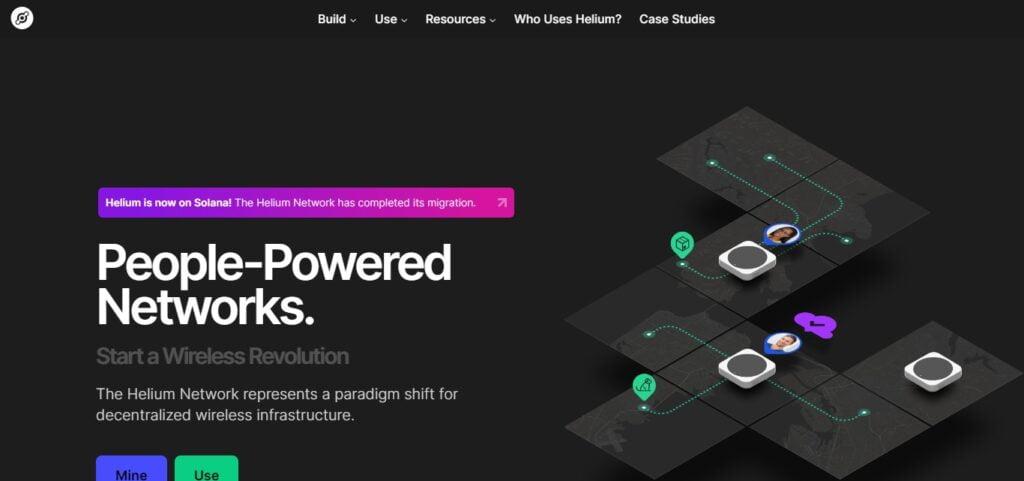
In addition to guaranteeing a broad and robust network, this decentralized approach rewards users with HNT, the local coin. The secret to Helium’s success is its capacity to build an ecosystem that can maintain itself and rewards users for their contributions to the expansion of the network. Helium stands out as a light of innovation as Web 3.0 continues to reshape the digital environment by securely, scalable, and community-drivenly bridging the blockchain and IoT gaps.
5.Ethereum (Best WEB 3.0 Crypto)
A key component of the Web 3.0 movement, Ethereum provides a decentralized platform that goes well beyond conventional cryptocurrencies. Ethereum is a leader in smart contract technology, allowing self-executing contracts to be created and carried out, which opens the door to a variety of decentralized applications (DApps). Ether (ETH), the platform’s native cryptocurrency, powers a wide range of applications, including non-fungible tokens (NFTs), decentralized finance (DeFi), and more. It also operates as a means of trade.

Ethereum’s stance as a driving force in the transition to a more decentralized internet has been cemented by its dedication to decentralization, transparency, and community-driven development. With continuous improvements, like the switch from a proof-of-stake consensus method to Ethereum 2.0, Ethereum keeps improving and addressing scalability issues, guaranteeing its relevance and influence in the quickly changing Web 3.0 environment.
6.Theta
Theta Network is positioned as a prominent participant in the Web 3.0 cryptocurrency space, providing creative solutions to overcome the difficulties associated with streaming services and content delivery. Theta is fundamentally a blockchain-powered decentralized video delivery network. The Theta Token (THETA), which encourages users to share their redundant processing and bandwidth resources, is one of its primary features. Through token awards, this innovative strategy not only improves the effectiveness of video streaming but also gives content creators a fresh approach to monetarily support their efforts.
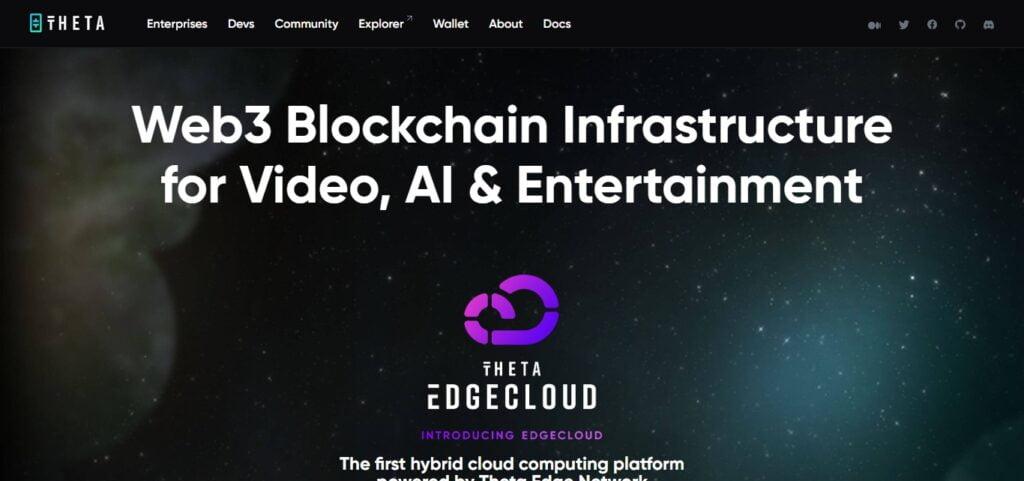
Theta’s Proof-of-Stake consensus method integration guarantees a scalable and safe network. Moreover, the ecosystem is enhanced by the introduction of the Theta Fuel (TFUEL) token, which powers network transactions and makes micropayments easier. Theta Network is leading the way in transforming the Web 3.0 paradigm’s digital entertainment scene in response to the growing demand for high-quality video content and streaming services.
7.BitTorrent
BitTorrent is a prominent player in the Web 3.0 cryptocurrency scene, revolutionizing decentralized file sharing and content delivery by utilizing blockchain technology. BitTorrent, which was acquired by the TRON Foundation, is a cryptocurrency that runs on the TRON blockchain and is known as the BTT token, or BitTorrent Token. BTT is essential for encouraging users to share their storage, bandwidth, and computer power, which builds a stronger and more effective file-sharing network.
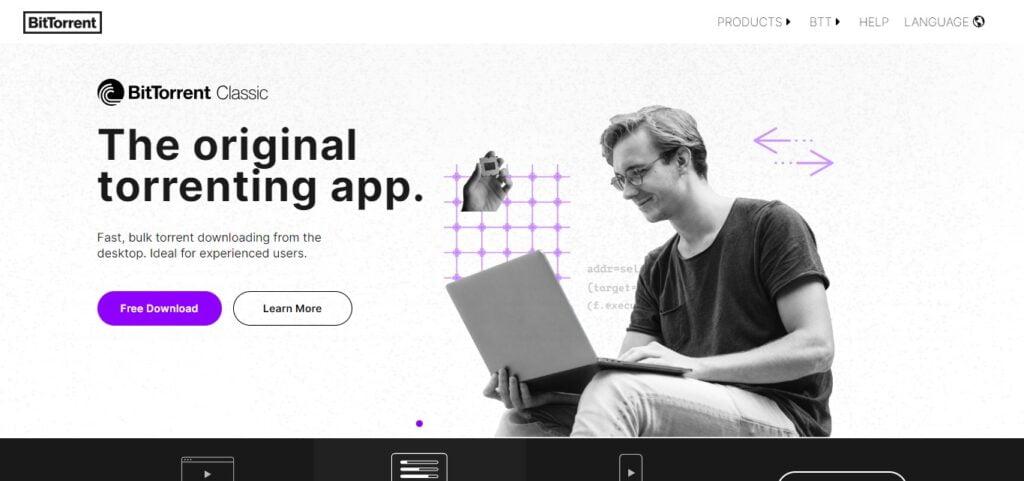
Because BitTorrent is decentralized, it is more secure and less vulnerable to the problems that come with centralized servers. Additionally, BTT promotes a more fair digital economy by providing a channel for content creators to get paid directly for their contributions. BitTorrent is a prominent actor in the Web 3.0 scene, demonstrating the potential of decentralized protocols to transform the way material is exchanged and distributed online with its extensive user base and track record.
8.GRT
One particularly interesting Web 3.0 cryptocurrency is The Graph (GRT), which powers DApps (decentralized apps) and makes it easier to retrieve and index blockchain data. In essence, The Graph is a decentralized protocol that allows developers to effectively obtain and show data in a decentralized way by indexing and querying data from many blockchains. Scalability and efficiency of decentralized applications are improved by The Graph, which offers a dependable and decentralized infrastructure for data indexing.
The native cryptocurrency of The Graph network, the GRT token, provides node operators that index and serve data with an incentive. The Graph, with its emphasis on decentralization and developer empowerment, makes a substantial contribution to the development of the Web 3.0 ecosystem by offering a key building block that enables decentralized apps to effectively and smoothly access blockchain data.
9.Basic Attention Token
In the world of Web 3.0 cryptocurrencies, Basic Attention Token (BAT) is a significant participant, especially when it comes to transforming digital advertising and content monetization. BAT runs on the Ethereum blockchain and was created to solve inefficiencies and privacy issues in the internet advertising sector. The fundamental component of the Brave browser ecosystem is the token, which aims to improve the fairness and openness of interactions between users, advertisers, and content producers. Users can choose to view advertising that respect their privacy by using BAT, and in exchange, they will receive BAT tokens.
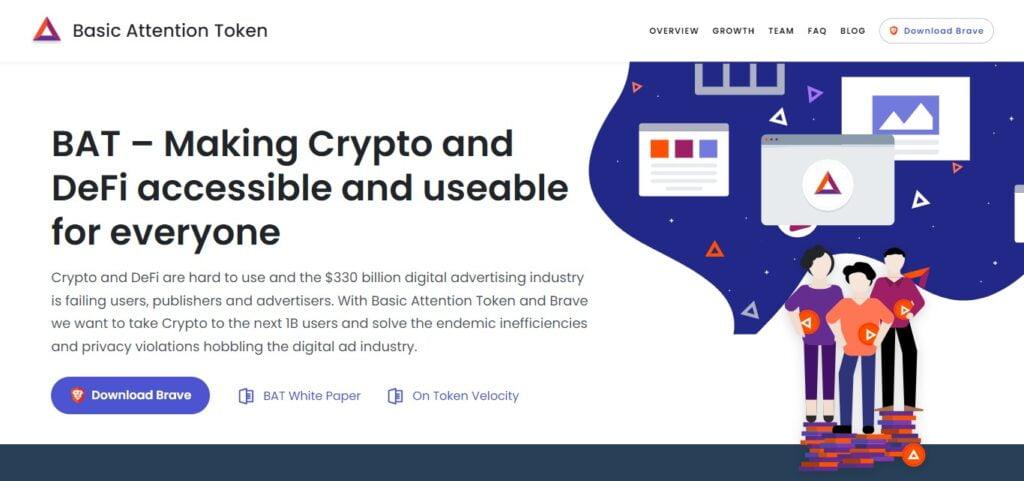
This strategy guarantees that advertisers may reach a more interested and cooperative audience while simultaneously giving people greater control over their online experience. Users that value their material can directly contribute BAT to publishers and YouTubers, as well as other content creators. BAT is a fascinating cryptocurrency in the Web 3.0 environment because of its novel paradigm, which suggests a possible transition towards a more user-centric and privacy-conscious internet.
10.Flux (Best WEB 3.0 Crypto)
In the context of Web 3.0, Flux stands out as a remarkable cryptocurrency that presents a distinctive method of decentralized cloud computing. Fundamentally, Flux is a blockchain-based platform that lets users safely share and earn money from their computer resources. Flux addresses issues with existing cloud services, like centralization and data privacy, by building a decentralized cloud infrastructure. Often referred to as FLUX, the cryptocurrency Flux is the native asset that drives incentives and transactions throughout the ecosystem.
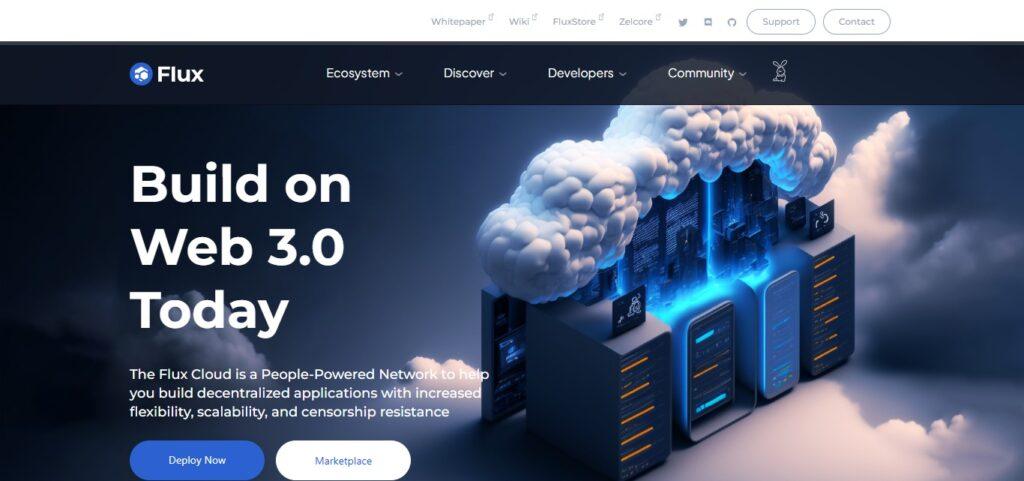
FLUX coins are awarded to users that donate their processing power to the network, encouraging a decentralized and cooperative cloud computing ecosystem. Flux is positioned as a prospective competitor in the Web 3.0 arena, where decentralized and community-driven solutions are transforming the future of digital infrastructure and services, thanks to its creative incentive model and commitment to privacy and security.
11.Ocean
In the field of WEB 3.0 and cryptocurrency innovation, the Ocean protocol is a trailblazer, skillfully fusing decentralized technologies with the enormous potential of the digital ocean. Ocean sets itself apart as a WEB 3.0 crypto platform by offering a decentralized data exchange protocol that makes it easier to share, monetize, and consume data in a transparent and safe way. Because of its incorporation of blockchain technology, users have unparalleled control over their information while data integrity and immutability are guaranteed.
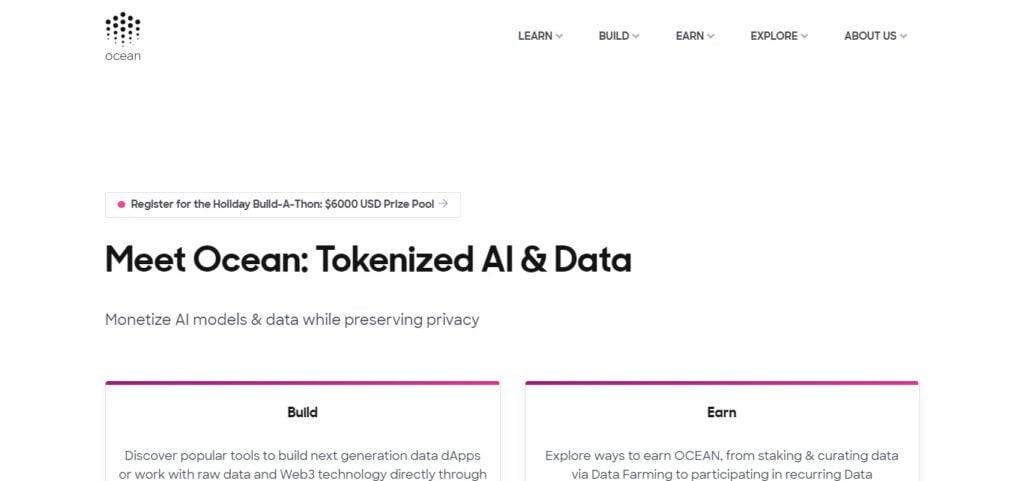
Additionally, Ocean’s distinct tokenization method makes it possible to create data pools, opening up new possibilities for value generation and cooperation. The native currency of the protocol, OCEAN, is essential to managing the ecosystem, rewarding data sources, and building a vibrant community. Ocean is a shining example of innovation in the rapidly changing WEB 3.0 environment, pushing decentralized data exchange to new heights and improving the digital ecosystem in the process.
12.Kadena
In the field of Web 3.0 cryptocurrency, Kadena stands out as a forerunner, skillfully fusing the strength of blockchain technology with its own smart contract language, Pact. Kadena distinguishes itself as a scalable, high-performance blockchain platform by providing a hybrid solution that blends the capabilities of public and private blockchains. Because of this duality, Kadena can solve issues with confidentiality and scalability that frequently beset other blockchain networks. Kadena is a multi-chain architecture pioneer that promotes scalability and interoperability while keeping security with its Chainweb protocol.
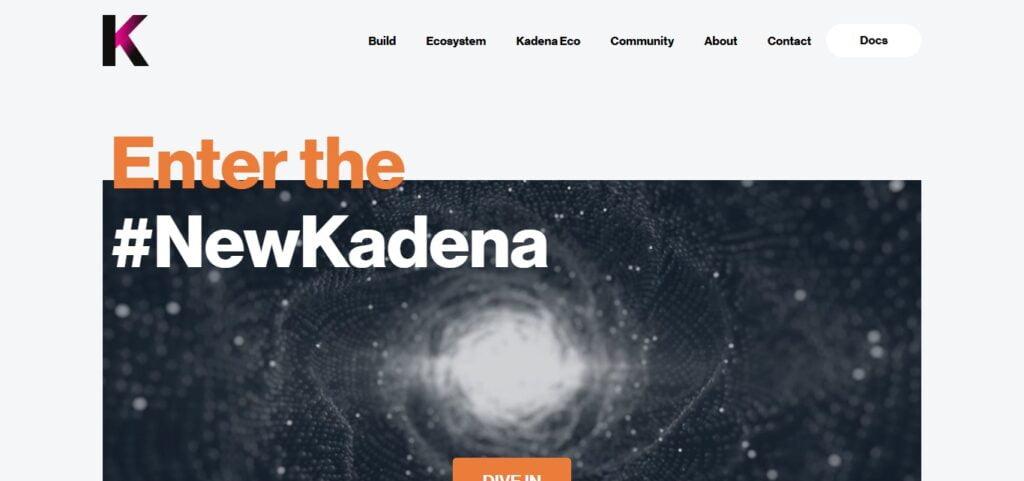
Kadena’s dedication to ease of use and uncomplicated design contributes to its attractiveness, enabling developers and companies to take use of blockchain technology. Kadena is a shining example of innovation in the quickly changing WEB 3.0 scene. It provides a strong basis for decentralized apps and smart contracts, which drive the digital future toward efficiency, security, and broad adoption.
13.Siacoin
Siacoin is a prominent participant in the WEB 3.0 cryptocurrency space, specializing on decentralized cloud storage solutions. The Siacoin platform uses a decentralized network of participants and blockchain technology to store files in a novel way. On the Sia network, users can safely store and retrieve data. The distributed architecture of the platform guarantees availability and redundancy. Users can sign contracts for storage services with Siacoin’s smart contract capability, which offers previously unheard-of transparency and cost effectiveness.
Through the leveraging of underutilized resources throughout the network, Siacoin upends the centralized cloud storage model that has long been in place. Siacoin is a strong competitor as the market for censorship-resistant, decentralized data storage expands. It provides a decentralized, cost-effective solution that is consistent with WEB 3.0 ideals. The Siacoin network serves as an example of how blockchain technology might fundamentally alter how we think about sharing and storing data in the digital era.
14.Arweave (AR)
Arweave (AR) stands at the forefront of the WEB 3.0 crypto landscape, providing a revolutionary solution for decentralized and permanent data storage. Arweave utilizes a blockchain-based protocol that fundamentally alters the conventional notion of data permanence by anchoring information onto its blockchain in a way that ensures it remains accessible indefinitely. This approach addresses the critical challenge of data preservation in an era where information is constantly at risk of being lost or manipulated.
The AR token plays a pivotal role in the Arweave ecosystem, serving as an incentive for network participants to store and maintain data, creating a sustainable and decentralized archival system. Moreover, Arweave’s innovative technology allows for efficient and cost-effective data storage, making it an attractive option for developers and businesses seeking reliable, censorship-resistant storage solutions. In the realm of WEB 3.0, where resilience, transparency, and permanence are paramount, Arweave emerges as a beacon, heralding a new era of decentralized and secure data storage.
15.Audius (Best WEB 3.0 Crypto)
Particularly in the areas of Web 3.0 and cryptocurrency, Audius is a forerunner. Using blockchain technology, Audius has revolutionized the music business by giving artists a decentralized platform to exhibit their work without being constrained by conventional middlemen. The network runs on a token economy, facilitating transactions and rewarding users with $AUDIO, its native cryptocurrency. This strategy not only guarantees artists receive just pay, but it also creates a community-driven ecosystem where users actively contribute to the platform’s success.
Encapsulating the decentralized spirit of Web 3.0, Audius signifies a fundamental change in our understanding of and engagement with digital material. The platform is gaining momentum and is a powerful illustration of how blockchain technology may revolutionize businesses and empower creators in the decentralized digital space.
16.Livepeer
A prominent actor in the constantly changing Web 3.0 and cryptocurrency ecosystem is Livepeer. With the goal of completely changing the video streaming market, Livepeer uses blockchain technology to build a decentralized, peer-to-peer network for broadcasting and transcoding videos. For developers and content producers, Livepeer offers a safe, effective, and economical solution through the use of a token-based reward scheme. The network is powered by the native cryptocurrency LPT (Livepeer Token), which encourages users to contribute their processing power in exchange for benefits.
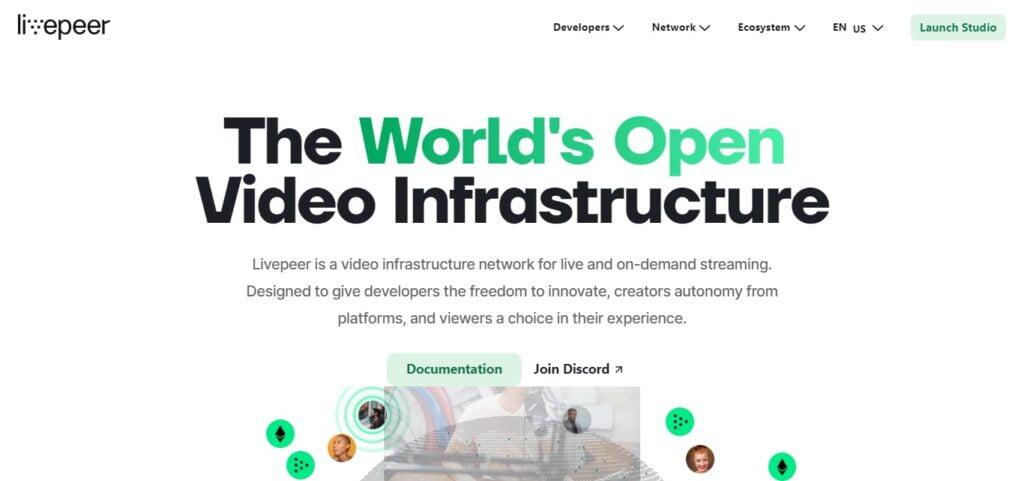
In addition to improving the scalability and dependability of video streaming, this decentralized strategy democratizes access to broadcasting services, empowering content creators and promoting a more diverse digital media environment. Livepeer is a prime example of how blockchain technology is disrupting traditional sectors and offering a peek into the decentralized Web 3.0.
17.Decentraland
In the fields of Web 3.0 and cryptocurrencies, Decentraland is a trailblazer, providing a novel approach to virtual reality and decentralized ownership. On its decentralized platform, Decentraland allows users to purchase, trade, and own virtual land parcels through the use of blockchain technology. Within this virtual environment, the digital currency that facilitates transactions is MANA, the native cryptocurrency. Users may create, explore, and profit from their digital assets and experiences because to this special combination of blockchain, virtual reality, and decentralized ownership.
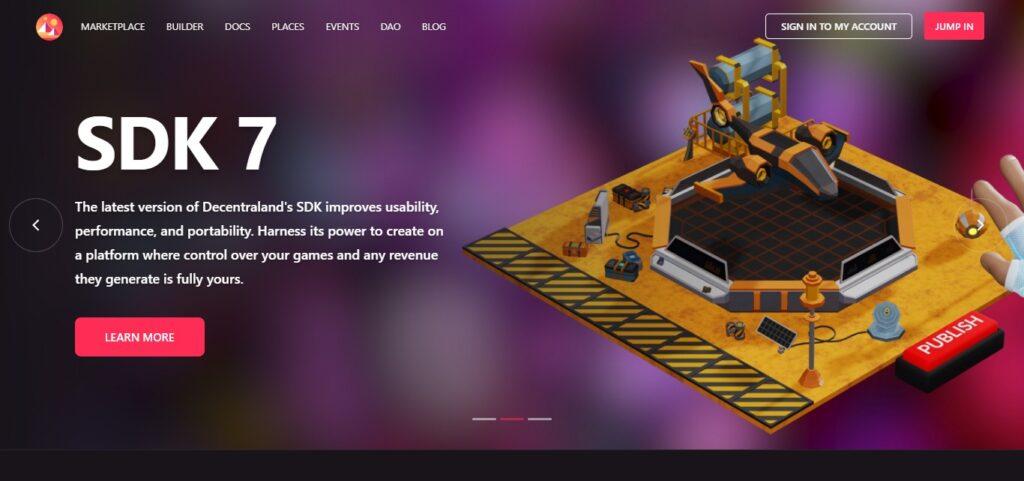
Decentraland offers a window into a future where people truly own ization control their digital presence, signaling a paradigm shift in how we think about and interact with online places. The platform is not only redefining virtual reality but also embodying the decentralization ideals that constitute the foundation of the Web 3.0 movement as it continues to develop and gain traction.
18.Kusama
Kusama is a leader in the cryptocurrency area and is frequently considered as one of the most promising ventures in the Web 3.0 and decentralized technologies space. Kusama, Polkadot’s sister network, runs on an original and cutting-edge technology that makes it easier for different blockchains to communicate with one another and promotes a fully decentralized and integrated digital environment. Kusama is unique in that it places a strong focus on experimentation and quick development, acting as a real-world test bed for fresh concepts and inventions before bringing them to Polkadot. This dynamic methodology facilitates rapid changes and upgrades, speeding up the blockchain space’s evolution.
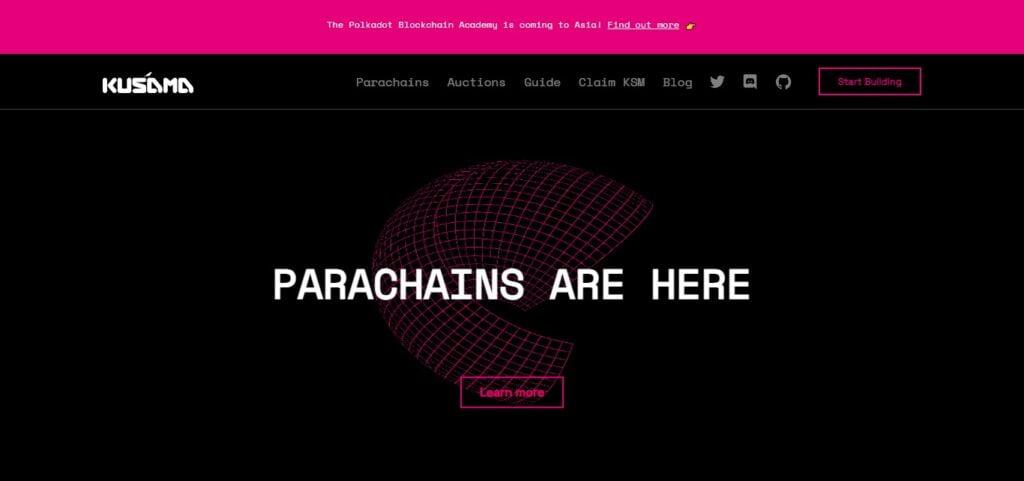
Token holders are empowered by Kusama’s governance mechanism, which allows them to actively engage in decision-making processes. This dedication to community engagement and decentralization fits in perfectly with Web 3.0’s guiding principles, which provide people more control over their digital experiences. Kusama is a leader in the Web 3.0 revolution, laying the groundwork for a more decentralized and connected future with its strong infrastructure and dedication to innovation and diversity.
19.Solana
In the field of Web 3.0 cryptocurrencies, Solana has become a leader thanks to its strong and efficient blockchain architecture, which solves the scalability issues that many other platforms have. Proof of History (PoH), an inventive consensus mechanism, and quick transaction processing have made Solana a popular option for smart contracts and decentralized applications (DApps).
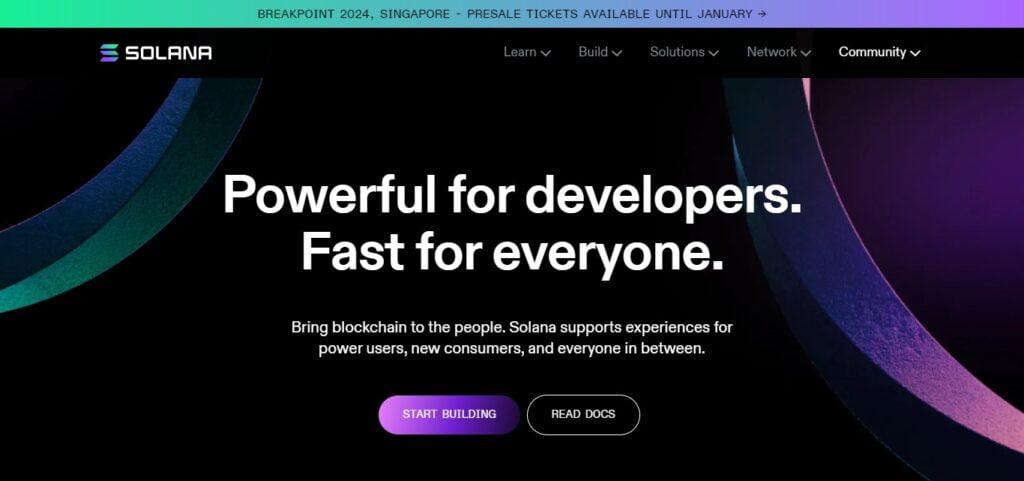
The platform is the perfect choice for developers and users looking for efficiency in the quickly changing Web 3.0 ecosystem because of its cheap transaction fees and almost instantaneous confirmation times. Solana’s expanding ecosystem is a result of its dedication to promoting decentralized finance (DeFi) and its backing of numerous initiatives. Solana is a major participant in the Web 3.0 revolution and stands out as the bitcoin field continues to change because it can offer a smooth and scalable basis for the upcoming generation of decentralized applications.
20.ZCash (Best WEB 3.0 Crypto)
Zcash has established itself as a significant participant in the Web 3.0 cryptocurrency market thanks to its cutting-edge privacy features, which set it apart from other blockchain systems. Zcash enables completely private transactions by utilizing zero-knowledge proofs, or zk-SNARKs, which guarantee the confidentiality of transaction data like sender, recipient, and transaction amount. The decentralized spirit of Web 3.0, where users want more control over their digital identities and transactions, is consistent with this privacy-focused approach.
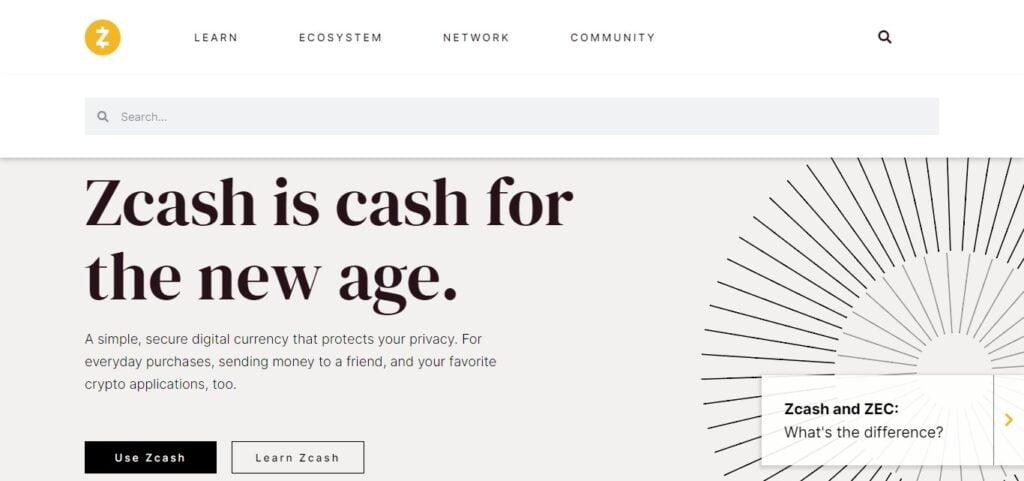
Because Zcash’s dedication to privacy doesn’t sacrifice scalability or security, it is a desirable choice for users that value transaction secrecy. Zcash stands out as a cryptocurrency that supports individual autonomy and anonymity, adding to the wide ecosystem of decentralized technologies as the demand for privacy-focused solutions develops in the Web 3.0 age.
21.BNB
Binance Coin (BNB) has emerged as a prominent player in the Web 3.0 cryptocurrency landscape, primarily due to its integral role within the Binance Smart Chain (BSC). BNB serves as the native utility token of the Binance ecosystem, facilitating transactions, powering smart contracts, and offering various functionalities within the BSC. Binance Smart Chain has gained traction for its fast transaction processing and low fees, making it an appealing choice for decentralized applications (DApps) and developers seeking an efficient blockchain solution.
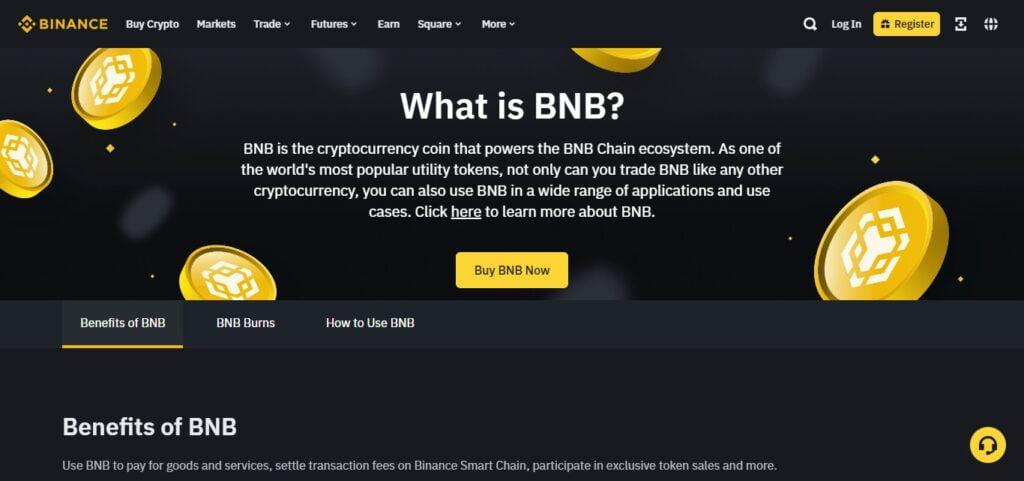
BNB’s integration into the broader Binance ecosystem provides users with a seamless experience, allowing for easy access to a variety of decentralized financial services and applications. As the demand for decentralized finance (DeFi) and Web 3.0 solutions continues to grow, BNB’s multifaceted role within the Binance Smart Chain positions it as a key asset in the evolution of the decentralized digital landscape.
22.Uniswap
In the world of cryptocurrencies, Uniswap is a prime example of a decentralized finance (DeFi) system that embodies the principles of Web 3.0. By utilizing smart contracts and the Ethereum blockchain, Uniswap is able to revolutionize the conventional financial landscape by facilitating trustless and permissionless token swaps. Users can trade straight from their wallets because it is a decentralized exchange (DEX), doing away with the necessity for middlemen like centralized exchanges. By offering incentives for users to contribute cash to liquidity pools, Uniswap’s unique automated market maker (AMM) methodology guarantees liquidity and facilitates a smooth and effective trading experience.
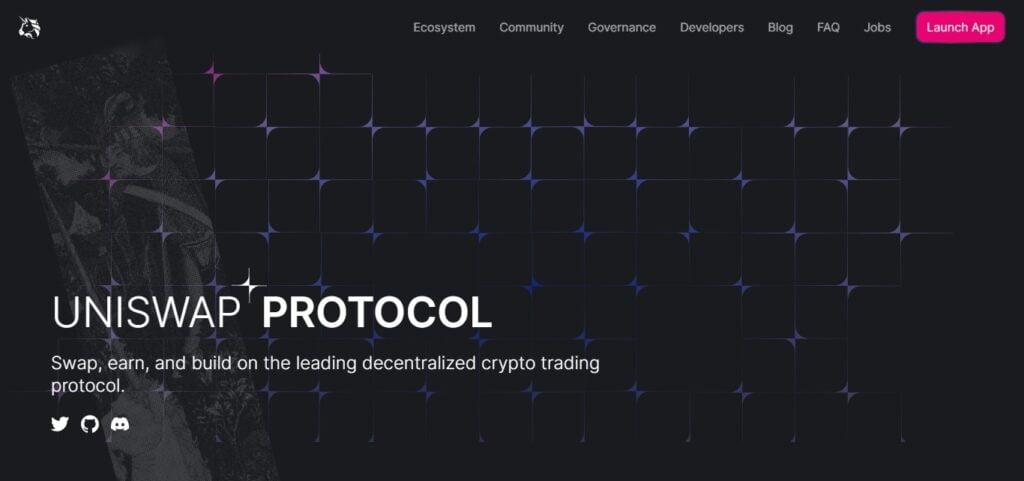
The community is further empowered by the platform’s governance token, UNI, which enables holders to influence the protocol’s destiny and take part in decision-making procedures. Uniswap is a key player in the transition to a more just and user-focused Web 3.0 cryptocurrency economy since it is a prime example of decentralization, transparency, and inclusivity.
23.BTC
Decentralization and resilience to censorship are two of the core values that underpin Bitcoin (BTC), one of the Web 3.0 cryptocurrencies. An independent group of miners maintains the peer-to-peer network that powers Bitcoin, the original digital money. A transparent, tamper-proof blockchain that offers an unchangeable, trustless transaction record controls its printing and security.
Because there is only so much Bitcoin—21 million coins—it is a store of wealth and a hedge against inflation because it fits with the concept of scarcity and digital gold. Moreover, the powerful blockchain of Bitcoin serves as the foundation for an expanding ecosystem of applications and services, all of which are made possible by its open-source nature. The future of Web 3.0 is being shaped by Bitcoin, the cornerstone of the decentralized financial movement, which emphasizes financial autonomy and inclusivity on a worldwide scale.
24.Stacks (STX)
Stacks (STX) is a prominent participant in the Web 3.0 cryptocurrency area, making significant contributions to the advancement of smart contracts and decentralized applications. Stacks interacts with Bitcoin to add smart contract capability to the biggest cryptocurrency network in the world. Stacks was built on the Bitcoin blockchain utilizing a special consensus process called Proof of Transfer (PoX). This novel approach makes use of Bitcoin’s well-established infrastructure while simultaneously improving the security of the Stacks blockchain. With Stacks, developers can create scalable and secure decentralized apps (dApps), extending the potential of blockchain technology beyond straightforward value transfers.
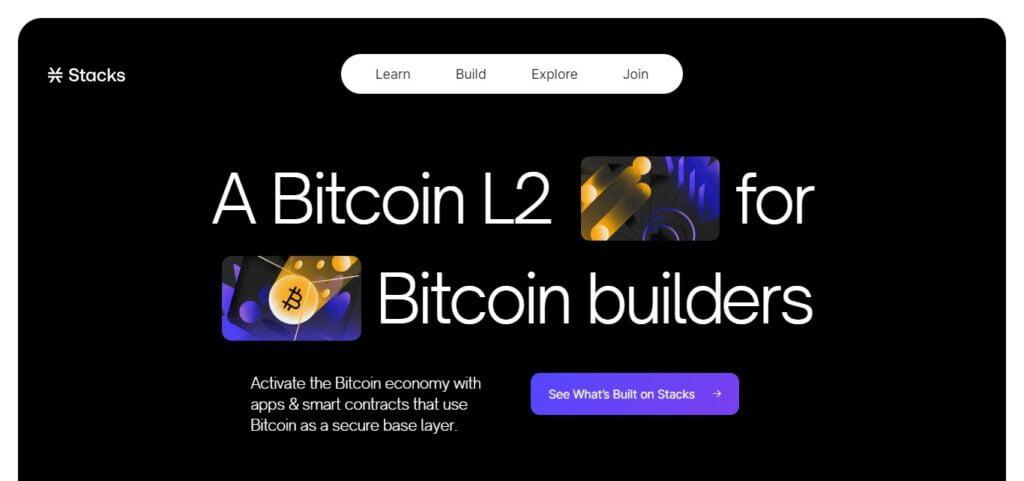
The Clarity smart contract language, which offers developers a safe and reliable environment, further powers the Stacks ecosystem. Furthermore, Stacks establishes an economic link between the Bitcoin and Stacks ecosystems by introducing the new idea of earning Bitcoin (BTC) through mining on the Stacks network. Stacks rises to prominence in influencing the decentralized future of Web 3.0 with its emphasis on empowering users, improving security, and promoting compatibility with Bitcoin.
25.Conflux Network (Best WEB 3.0 Crypto)
Conflux Network stands out as a frontrunner in the realm of Web 3.0 cryptocurrencies, embodying a transformative approach to blockchain technology. At its core, Conflux is engineered to address the scalability challenges that have hindered many other blockchain networks, presenting a highly efficient and secure platform for decentralized applications (DApps). What sets Conflux apart is its utilization of a unique Tree-Graph consensus mechanism, combining the benefits of both Proof-of-Work (PoW) and Proof-of-Replication (PoR).

This innovative approach not only ensures a high level of security but also facilitates rapid transaction processing and scalability, making it well-suited for the demands of the modern decentralized internet. Furthermore, Conflux’s commitment to interoperability positions it as a catalyst for seamless integration with existing systems, fostering collaboration and compatibility across diverse blockchain networks. As the crypto space continues to evolve, Conflux Network emerges as a compelling force, offering a robust foundation for the next generation of decentralized applications and services within the Web 3.0 landscape.
26.Marlin POND
A recent addition to the Web 3.0 crypto space, Marlin POND (Permissionless Overlay Network Delegation) takes a novel way to resolving scalability and performance issues. Presenting itself as a layer-0 scaling solution, Marlin POND utilizes a special blend of Proof-of-Stake (PoS) and Proof-of-Relay (PoR) consensus processes to guarantee a safe and effective network for blockchain transactions and decentralized applications (DApps). The emphasis on establishing a permissionless and trustless environment, which enables any user to function as a relay node and enhance the overall performance of the network, is what distinguishes Marlin POND.
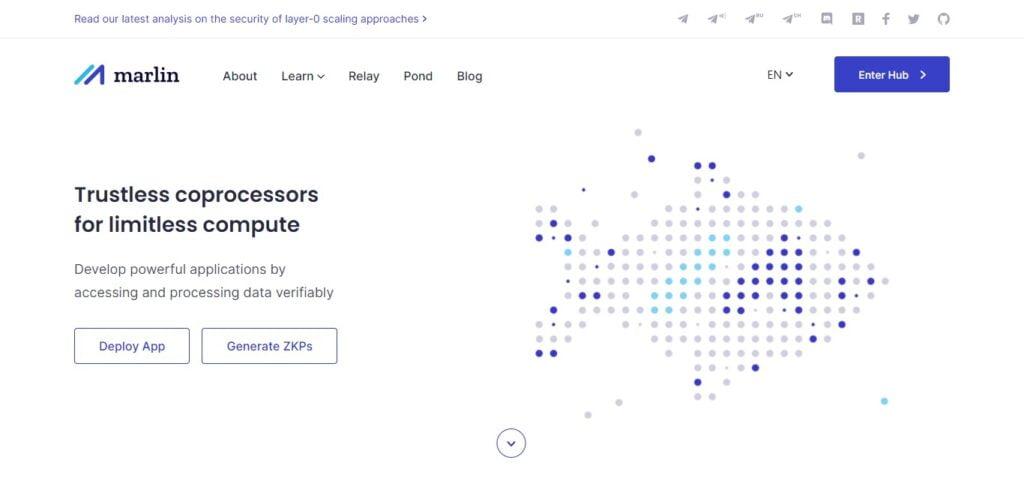
This inclusive strategy fosters an open and cooperative ecology while simultaneously strengthening decentralization. Marlin POND is built with an interoperability commitment in mind. It can be easily integrated with a variety of blockchain networks, promoting a more interconnected and interoperable Web 3.0. Marlin POND sticks out as a viable approach to overcoming scaling challenges and realizing the full potential of decentralized applications in the Web 3.0 era as the crypto ecosystem continues to change.
27.XYO Network
The XYO Network is a noteworthy contender in the Web 3.0 cryptocurrency space, providing cutting-edge solutions that use blockchain technology to revolutionize the authentication and verification of location data. With its decentralized oracle network, XYO makes it easier for smart contracts and the real world to communicate in a secure and trustless manner. By cross-referencing several sources, its special proof-of-origin consensus process verifies the accuracy of location data and makes it impervious to manipulation.
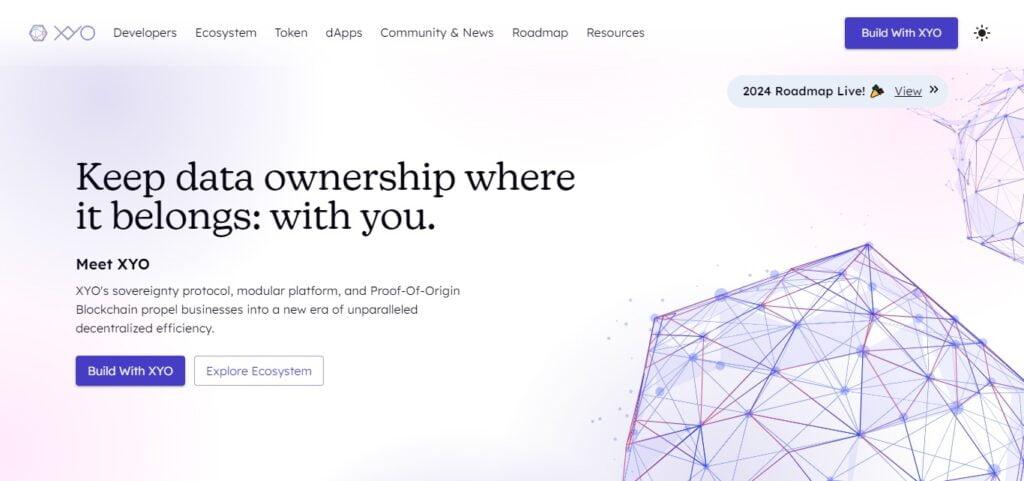
This improves the precision of location-based applications and creates new opportunities for a variety of sectors, such as logistics, supply chain management, and the Internet of Things (IoT). By offering a dependable and transparent infrastructure for location-based services, the XYO Network advances Web 3.0 with a dedication to decentralization and data integrity, establishing the groundwork for a more dependable and connected digital future. With its emphasis on data integrity and real-world applicability, XYO stands out as a significant project in the Web 3.0 environment as the crypto field continues to grow.
28.Litentry LIT
Among Web 3.0 cryptocurrencies, Litentry (LIT) is a noteworthy contender. It provides a decentralized identity aggregation platform that uses blockchain technology to improve user privacy and control over personal information. Litentry offers a distinctive solution in the rapidly changing domains of Web 3.0 and decentralized finance (DeFi) by enabling users to combine their identities from many networks, guaranteeing a thorough and safe portrayal of their digital footprint. This improves user convenience while also giving people the ability to handle their data in a transparent and safe way.
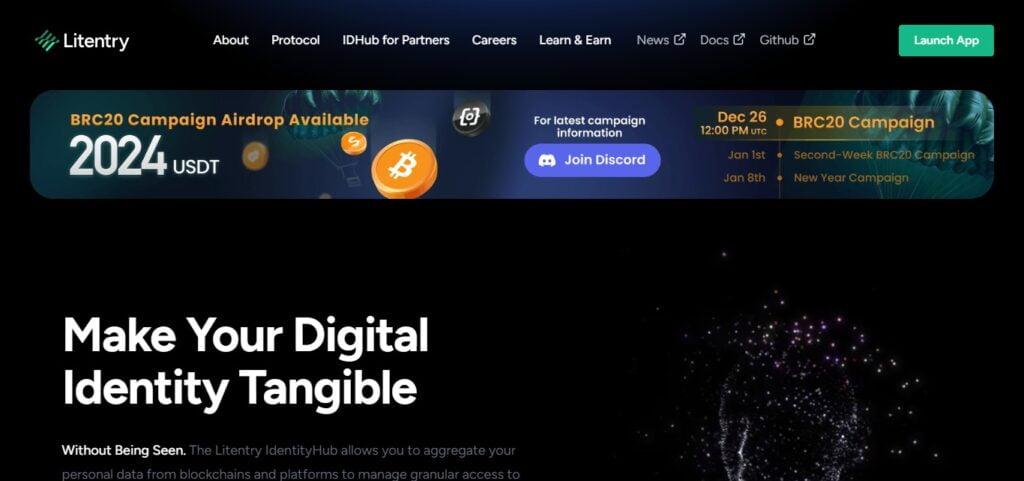
Litentry’s dedication to privacy is consistent with the Web 3.0 movement’s philosophy of granting consumers more control and ownership over their online personas. With its creative strategy, Litentry is positioned to be a major force in defining Web 3.0 crypto as the need for decentralized identity solutions grows. With its emphasis on interoperability, privacy, and user-centricity, Litentry has the potential to establish itself as a key player in the developing decentralized digital market.
29.Elastos
Leading Web 3.0 cryptocurrency Elastos (ELA) provides an extensive ecosystem that reimagines the internet’s framework. Elastos is unique in that it is dedicated to building a safe, user-focused, decentralized internet. Elastos wants to create a new paradigm where identities and digital assets are protected in a decentralized, trustless environment by using blockchain technology. By combining an operating system, runtime environment, and decentralized application (DApp) platform based on blockchain technology, the platform promotes a more transparent and safe online environment.
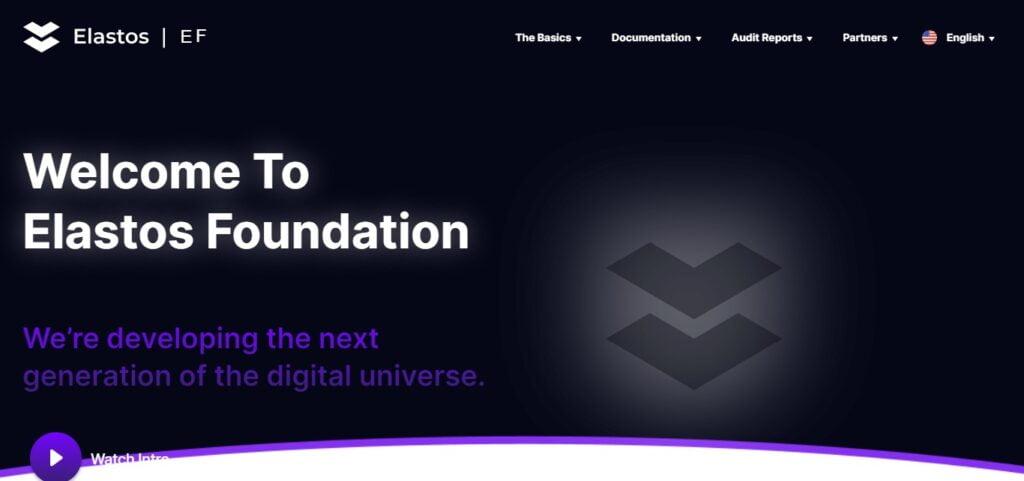
Consistent with Web 3.0 concepts, Elastos also concentrates on protecting data breaches and illegal access. Elastos emerges as a leader in the growing need for decentralized solutions, providing a strong foundation for a future where people will have more control over their digital assets and data on the internet. Elastos is one of the top Web 3.0 coins because of its creative thinking and dedication to changing the internet’s architecture, greatly advancing the development of a more decentralized and user-centric digital age.
30.Horizen (Best WEB 3.0 Crypto)
In the world of Web 3.0 cryptocurrencies, Horizen stands out as a trailblazer, bringing in a new era of safe and decentralized digital environments. Horizen’s approach is centered around its dedication to privacy, scalability, and diversity. Horizen utilizes state-of-the-art technologies like as zero-knowledge proofs to guarantee the confidentiality of user data and the highest level of privacy during transactions. By allowing the creation of customizable blockchains, the platform’s sidechain solution, Zendoo, addresses the fundamental constraints of existing blockchain networks and improves scalability.
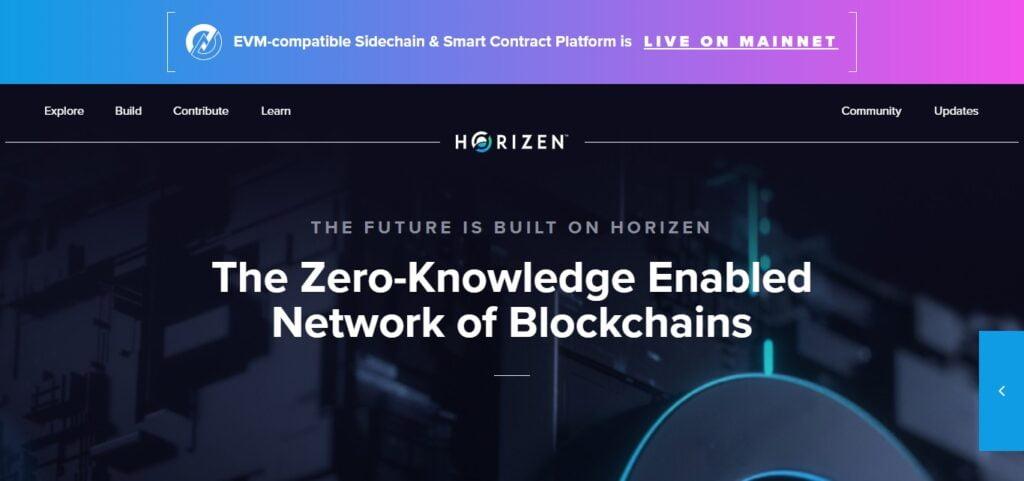
Additionally, Horizen actively involves its community by providing users with a say in decision-making processes through a strong governance approach. Horizen, which provides a safe and private online environment that empowers people all over the world, is positioned to play a significant role in defining the future of Web 3.0 with an emphasis on building a completely decentralized ecosystem.
What Make Best WEB 3.0 Crypto?
In the context of cryptocurrency, Web 3.0 refers to a linked, decentralized internet where people have more control over their activities and data. The most successful Web 3.0 crypto initiatives usually have important characteristics like user empowerment, interoperability, and decentralization. Decentralization promotes a more democratic and censorship-resistant environment by ensuring that no one institution has undue control. An ecosystem that is more integrated and effective can only be achieved through interoperability, which is essential for smooth communication and cooperation between various blockchain networks and apps.
Giving people more control over their data and digital identities is known as user empowerment, and this is frequently accomplished through self-sovereign identification solutions. Strong protocols and ecologically friendly consensus methods are given top priority in the greatest Web 3.0 crypto initiatives, so security and sustainability are also crucial. Furthermore, a robust and open governance structure contributes to the platform’s continued development and flexibility. All things considered, these components are combined by the top Web 3.0 cryptocurrencies to produce a durable, open, and user-focused digital infrastructure.
Conclusion Best WEB 3.0 Crypto?
A number of blockchain initiatives and cryptocurrencies are advancing Web 3.0. Ethereum has become a major participant thanks to its enormous development community and smart contract capabilities. However, the search for substitute alternatives has been prompted by problems with scalability and expensive gas prices.
With the goal of addressing scalability and interoperability issues, projects like Cardano and Polkadot provide special capabilities to enable a more decentralized and linked online. Furthermore, the popularity of Binance Smart Chain has grown because to its compatibility with the Binance ecosystem and cheaper transaction rates.
It’s crucial to remember that Web 3.0’s success depends on a variety of factors, including broad acceptance and practical applications. Web 3.0’s future will probably be shaped by the possibilities of decentralized apps (DApps), non-fungible tokens (NFTs), and different blockchain-based solutions.
FAQ Best WEB 3.0 Crypto
What is Web 3.0?
Web 3.0, often referred to as the decentralized web, is the next generation of the internet that aims to provide a more open, secure, and user-centric experience. It leverages blockchain technology and decentralized protocols to empower users with more control over their data and digital interactions.
What are Web 3.0 Cryptocurrencies?
Web 3.0 cryptocurrencies are digital assets that play a key role in the decentralized web ecosystem. They are designed to facilitate transactions, smart contracts, and decentralized applications (DApps) within the Web 3.0 framework.
Which cryptocurrencies are considered the best for Web 3.0?
Some of the prominent cryptocurrencies associated with Web 3.0 include Ethereum (ETH), Polkadot (DOT), Filecoin (FIL), and Cardano (ADA). These platforms provide infrastructure and tools for building decentralized applications and services.
What makes Ethereum a key player in Web 3.0?
Ethereum is a leading blockchain platform supporting smart contracts and DApps. Its robust ecosystem and large developer community make it a cornerstone of Web 3.0. Ethereum’s transition to a proof-of-stake consensus mechanism (Ethereum 2.0) further enhances its scalability and sustainability.
How does Polkadot contribute to Web 3.0?
Polkadot is a multi-chain platform that enables different blockchains to interoperate. It facilitates seamless communication and sharing of information between different blockchains, enhancing scalability and fostering a more interconnected Web 3.0 ecosystem.
